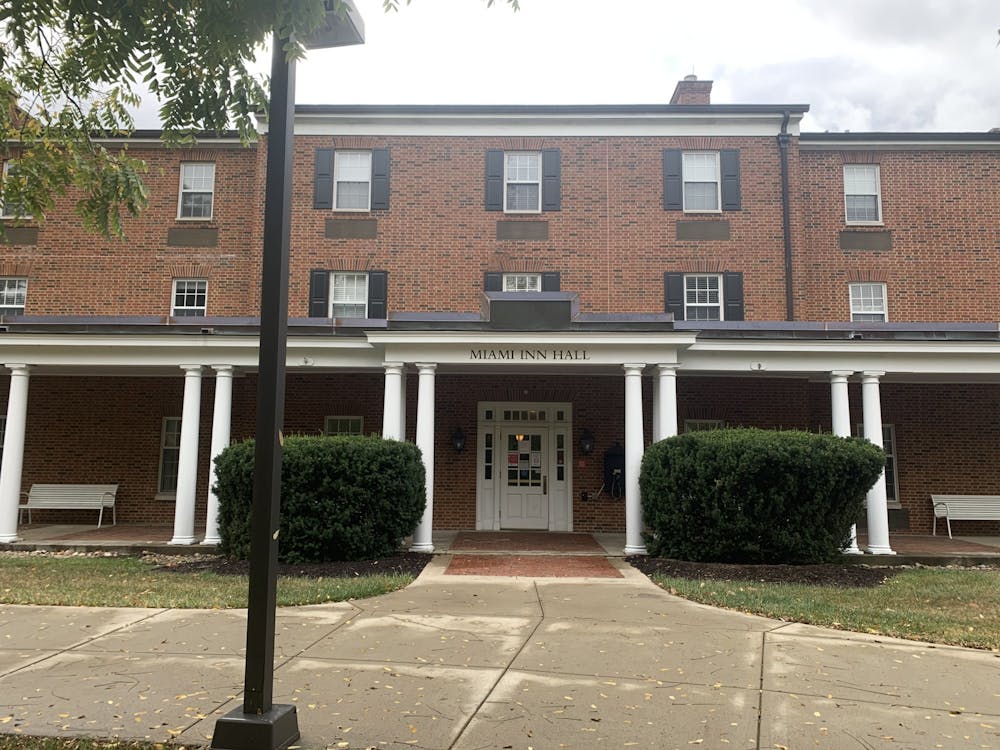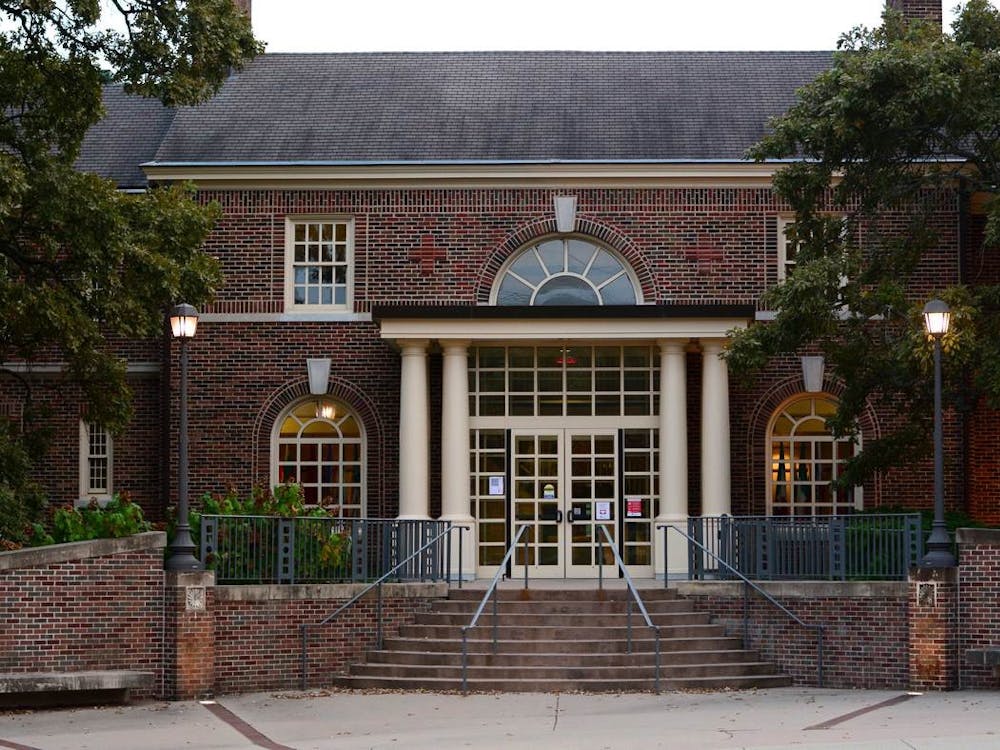Some students spend months acquiring different items for their dorm room, with everything from throw pillows to string lights making the cut. Other students slap a couple posters on the wall and call it a day.
But however they chose to decorate it, after move-in week some Miami University students didn’t get to spend much time in their dorm room at all.
After working with the county, Miami designated certain residence halls as quarantine and isolation dorms, reserved solely for those who have tested positive for COVID-19 or may have been exposed.
“We worked with [Butler County Health] on understanding what the requirements were for quarantine and isolation,” said Dean of Students Kimberly Moore.
These requirements include all quarantined or isolated students having their own bedroom. Another suggestion is that students have their own bathroom, although this is not required, Moore said.
She also said the university’s approach to quarantining and isolating students is constantly evolving with new guidance from Butler County Health.
“All of this is sort of an iterative process,” Moore said. “You know, quarantine and isolation is not a traditional function of a university. This is all very new.”
The university is not publicly disclosing which dorms are currently being used for quarantine and isolation.
Moore also said different dorms will be used for quarantining and isolating students. Separate floors in one building could be used for both, but right now, Miami does not plan to mix quarantining and isolating students within the same building.
Quarantine and isolation have different time requirements, with students staying in isolation for 10 days and quarantine for 14, said Vicka Bell-Robinson, director of residence life.
Students who have tested positive will go to isolation, while students who have had contact with someone who has tested positive will go to quarantine.
A 14-day quarantine gives the virus enough time to manifest, while a 10-day isolation will give the virus enough time to run its course as long as the student is symptom-free, Bell-Robinson said.
Enjoy what you're reading?
Signup for our newsletter
Once it is determined that a student has tested positive or has a presumptive positive based on diagnoses from a doctor, they are notified by both Butler County Health and the Office of the Dean of Students, Moore said. The student is notified by both a phone call and a detailed email.
Recently, students have been given the opportunity to quarantine or isolate at home if they live within driving distance, Moore said. If not, students are assigned a location on campus to report to. There is no check-in process once the student arrives at the dorm. They are given ID access for the building and the room and are expected to report directly there.
Once the student has arrived in the assigned room, they are given information on how to order food and are checked on by university staff.
“We try to make sure that every student, the first day that they go in quarantine or isolation, that they’re getting a call that day,” Bell-Robinson said. “And then typically that [staff member] is assigned to [the student] for the time that they’re in quarantine and isolation.”
The student will discuss with the staff member how often they would like to be checked on and through what method (text, email, phone call, etc.). Robinson said they want to listen to the students’ preferences and will respect their desire to be checked in as frequently as they would like, whether it be daily or every few days.
Students are given the opportunity to receive three meals a day and can place orders until noon the day before and select which meals, if not all three, they wish to receive. Students have also been given the option to use contactless delivery services, such as DoorDash, and can leave their rooms to pick up food.
The quarantine/isolation dorms do not have resident assistants but will have various staff members available to help students.
“Regularly, in the building, you’re going to find dining staff that are delivering the meals, you’re going to find housekeeping that is hitting the high-touch areas, particularly in the quarantine area, a little less frequently in the isolation area,” Bell-Robinson said, “and then you are going to periodically have residence life staff going through.”
First-year Hannah Sullivan has experienced an isolation dorm first-hand after testing positive less than a week after arriving on campus.
Sullivan moved into her residence hall on Monday, Sept. 14, and on Wednesday, learned that she had been around a friend who tested positive. She went to an urgent care facility off-campus and got tested on Thursday as some symptoms, including a runny nose and a sore throat, started to appear. Once she got her results, she immediately used the self-reporting form to notify the university.
“They gave me an email right away and talked to me about my case, saying, ‘This is your room in the isolation dorm at the Miami Inn. You should report here immediately,’” Sullivan said.
Sullivan grabbed her go-bag and walked to the Miami Inn on Saturday, Sept. 19, six days after arriving on campus.
“The day after I got in here, I got a call from Butler County, and we talked about my case, talked about when my symptoms started, when my start and end release date would be, and so we figured that out,” Sullivan said. “That was nice to have communication with the county about my case and, you know, what the plan is for me.”
Student Health Services has called her almost every day to check in, and the residence director of her regular dorm has also called to check on her.
“It does feel like, you know, they’re concerned and they care for us,” Sullivan said.
Sullivan said the dorms and bathrooms are clean, even pointing out the showers are nicer than in her regular dorm. She said meal delivery times are fairly consistent, although food can be a little cold.
The thing she’s struggled with the most, though, has been her mental health.
“At a time where you feel really under the weather and you just want your mom to comfort you or something, you’re alone,” she said. “And you just kind of have to get through it by yourself.”
She has found a few bright spots, however, making friends with those who are isolating around her.
“I’ve heard people, and I’ve kinda stuck my head out the door and been like, ‘Hi, how are you?’ and we’re maintaining six feet,” Sullivan said. “So I’ve made a couple friends that way, and we just talk, and it’s nice to have some new friends through this.”
While Sullivan has had one experience in a quarantine dorm, Moore stressed that the process is continuously changing.
“It’s important to know that guidance from Butler County Health has changed very frequently and very quickly,” Moore said. “And so a student’s experience in quarantine and isolation on Sept. 1, looks very different than an experience that a student going into quarantine or isolation would have now.”
Sullivan said, overall, her experience has been good, and that she’s willing to go through 1o days of isolation if it’s for the greater good of the campus. She thinks many other students in her isolation dorm feel the same way.
“All of us in here are so grateful that we would sacrifice 10 days to save the public health of Miami students as a whole,” she said. “The conditions in here are really not bad. It seems bad at first because you don’t know what to expect, but I’ve been in here for about six/seven days, and I’m doing just fine. It’s really not as bad as people think.”




